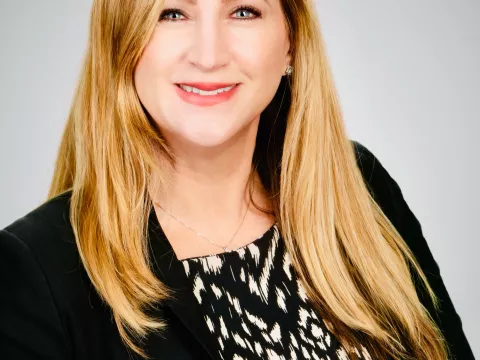- AdventHealth
Choose the health content that’s right for you, and get it delivered right in your inbox.
Continuous Glucose Monitors (CGMs), wearable devices used to track glucose levels, have become a critical tool for individuals seeking to effectively monitor their blood sugar levels. Approved by the Federal Drug Administration in 1999, CGMs were previously available only through prescription. However, as of earlier this year, they are now accessible over the counter (OTC).
Laura Heffern, a Doctorate prepared Nurse Practitioner at AdventHealth Medical Group Primary Care at Meridian, specializes in the management and treatment of chronic illnesses, including type 2 diabetes. Additionally, she has undergone specialized training in type 2 diabetes from the American Diabetes Association. Laura is knowledgeable about both the advantages and the controversy surrounding CGMs recent public availability.
“There’s no doubt that CGMs are life-changing technology for people who otherwise manually poke their finger multiple times per day to manage their disease,” said Laura. “Taking away the pokes, having a technology that can alert them if they are getting too high or too low helps their quality of life immensely.”
A CGM stays on a patient's arm, allowing continuous monitoring of blood sugar without frequent finger pokes. The sensor sends data to the receiver, alerting the patient to high or low levels, helping prevent serious events.
The first OTC CGM was approved in March 2024 intended for people 18 and older with prediabetes or type 2 diabetes who don't take insulin. Other CGMs have been released this year targeting people that either don’t use insulin or don’t have diabetes.
Since becoming widely available, the wellness industry has caught on and argue that information from a CGM could help people with prediabetes and even those without diabetes understand their glycemic response and live healthier lives.
“The basic idea is, we don’t reserve scales or blood pressure cuffs to just people with obesity or high blood pressure, but rather anyone can have access to these tools to help understand their health, so why limit access to a CGM?” said Laura.
Over the counter CGMs now give access to technology and information to the general population that used to not be readily available.
Now people who are determined to get a CGM can do so without a prescription. Also, in a recent trial people who used data from a CGM lost more weight compared to those without one.
Allowing widespread access to CGMs comes with some challenges.
Laura believes these technologies can sometimes provide inaccurate readings, causing elevated or lowered glucose levels that may result in unnecessary health concerns, doctor visits, or emergency room visits. They are not designed to diagnose diabetes or hypoglycemia but might lead individuals to self-diagnose without proper guidance. Moreover, they are costly, with most memberships exceeding $80 per month.
“Based on the current evidence, my take is that long term use for CGM in a healthy population with a normal A1c (below 5.7%) is expensive and not necessary,” said Laura.
She supports people who are using the device for 1 -3 months to gather insights on glycemic trends, understand the impact of exercise on glucose levels, and promote accountability for reducing sweets consumption, especially for individuals who are genuinely interested in or attempting to make healthy lifestyle changes.
“In a time when healthy foods, gym memberships, personal trainers, and weight loss accountability groups are expensive, I tend to think that until more data proves to me otherwise, the price per month may be better spent on one of these avenues for health.,” said Laura.
This is a significant time in the field of diabetes technology, with new innovations in tracking and prevention being discovered more frequently. Laura acknowledges the current trend but emphasizes the importance of patients consulting with experts and not solely relying on technology.
“In general, I am a fan of fewer barriers to health education and technology. So, being able to tell patients, ‘Hey your insurance won’t cover a CGM, but you can get one over the counter,’ is a huge win for me as a clinician,” said Laura. “However, data alone won’t change health outcomes. Though people may not need a doctor, NP, or PA for a prescription, our value comes from providing education and guidance for these OTC products.”
If you would like to schedule an appointment to see Laura at her clinic, click here.




